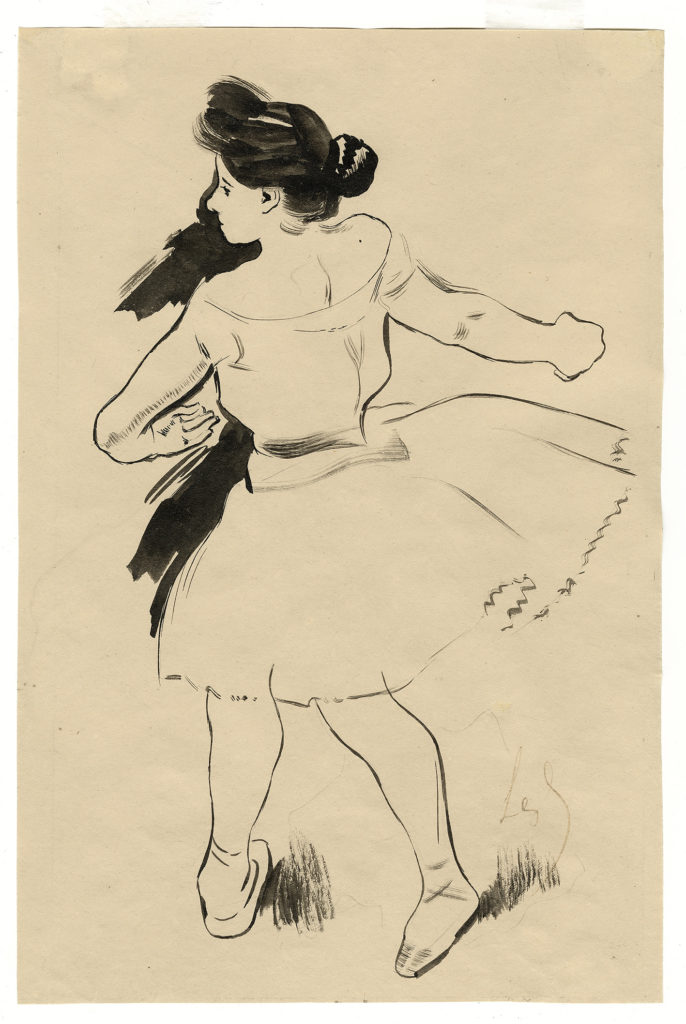Danseuse
Dancer
Pen and ink on wove paper, ca. 1901
Signed lower right Leg
Size
295 x 193 mm
Provenance
Private collection, The Netherlands
Literature
Eugène Ramiro and Louis Legrand, Faune Parisienne, Paris, 1901, p. 77 (ill.)
Exhibition
This rare and radiant drawing is a study for one of the illustrations for his book with Erastène Ramiro, Faune Parisienne, published by Gustave Pellet in 1901. More precisely, for the chapter ironically entitled “Les Rats”. The girl here depicted seems to have nothing to do with the caustic title of Ramiro, but with Legrand’s great passion and mastery about the world of ballet. Like Degas, he spent a lot of time in the rehearsal rooms of dancers exercising, resting, or getting dressed.
A painter and printmaker who can be counted among the finest practitioners of the technique of etching during the Fin-de-siècle period, Legrand came to meet Ramiro via Félicien Rops, his teacher. Under his spell, Legrand realized a work entitled Prostitution, that brought Legrand to be taken to court for obscenity. Rops asked his friend, the lawyer Eugène Rodrigues to defend him, and they became friends. Rodrigues, under the pseudonym Erastène Ramiro, was also a brilliant writer, and he asked Legrand to illustrate his article about the Cancan dance in Gil Blas. This publication was a great success, which put Legrand onstage, and above all encouraged him to depict the world of dancing. He then illustrated in 1892 Le Cours de Danse Fin de Siecle with a revised text by Ramiro, Les Petites du Ballet in 1893, and the Faune Parisienne in 1901 with Ramiro again.
This drawing is inventive. With a few brushes of ink, he created a lively silhouette, with a true impact. Such as Degas, Legrand induced and captured an impression of movement with the inversed feet of the ballerina: she is ready to turn, and puts her body in motion in a pirouette. The publisher of Faune Parisienne, Gustave Pellet, was Legrand’s most active promoter, but also an avid collector of Degas works. During three decades, Pellet published almost three hundred original etchings and drypoints by the artist. Then close to Steinlen and the Montmartre circle, Legrand became famous for his depiction of scenes in bars, cafes, and other turn-of-the-century meeting places, but his little dancers, soberly realized, remain the most original part of his oeuvre.






